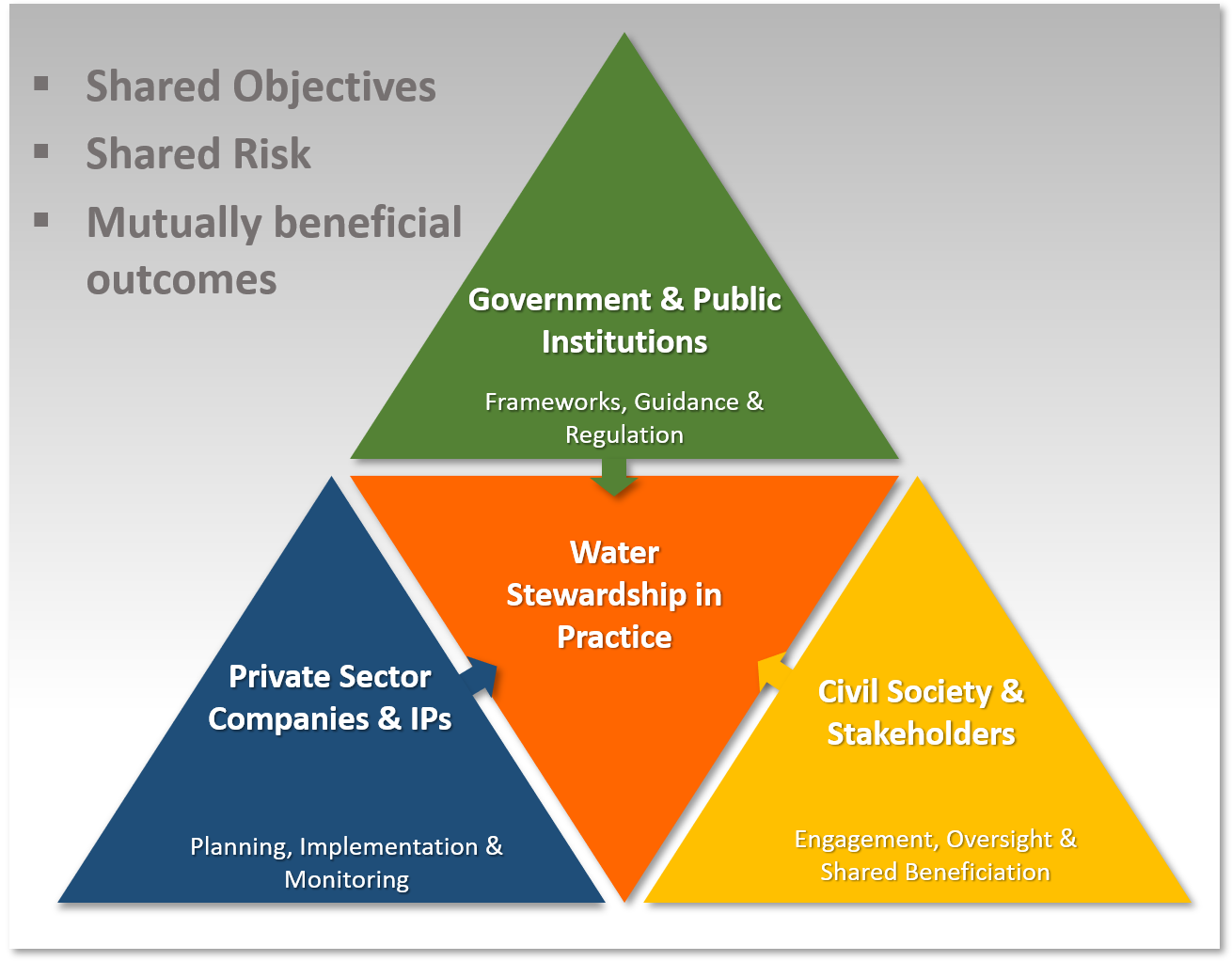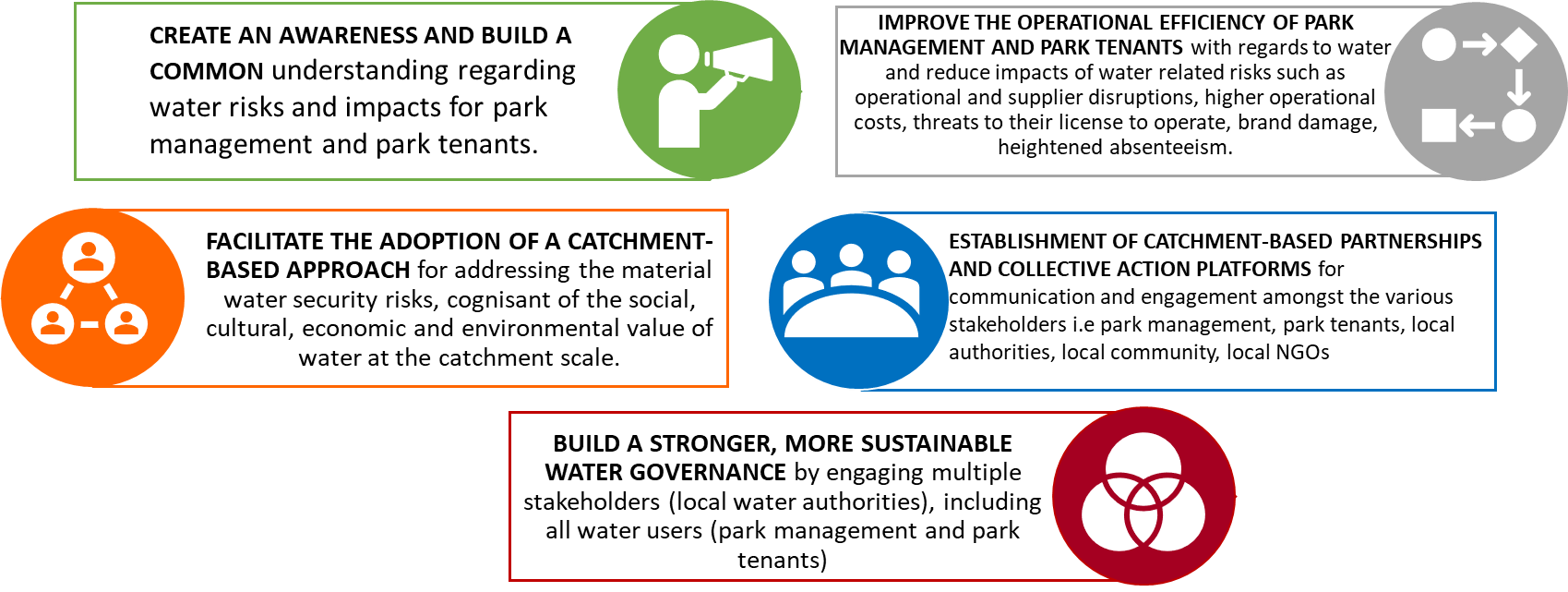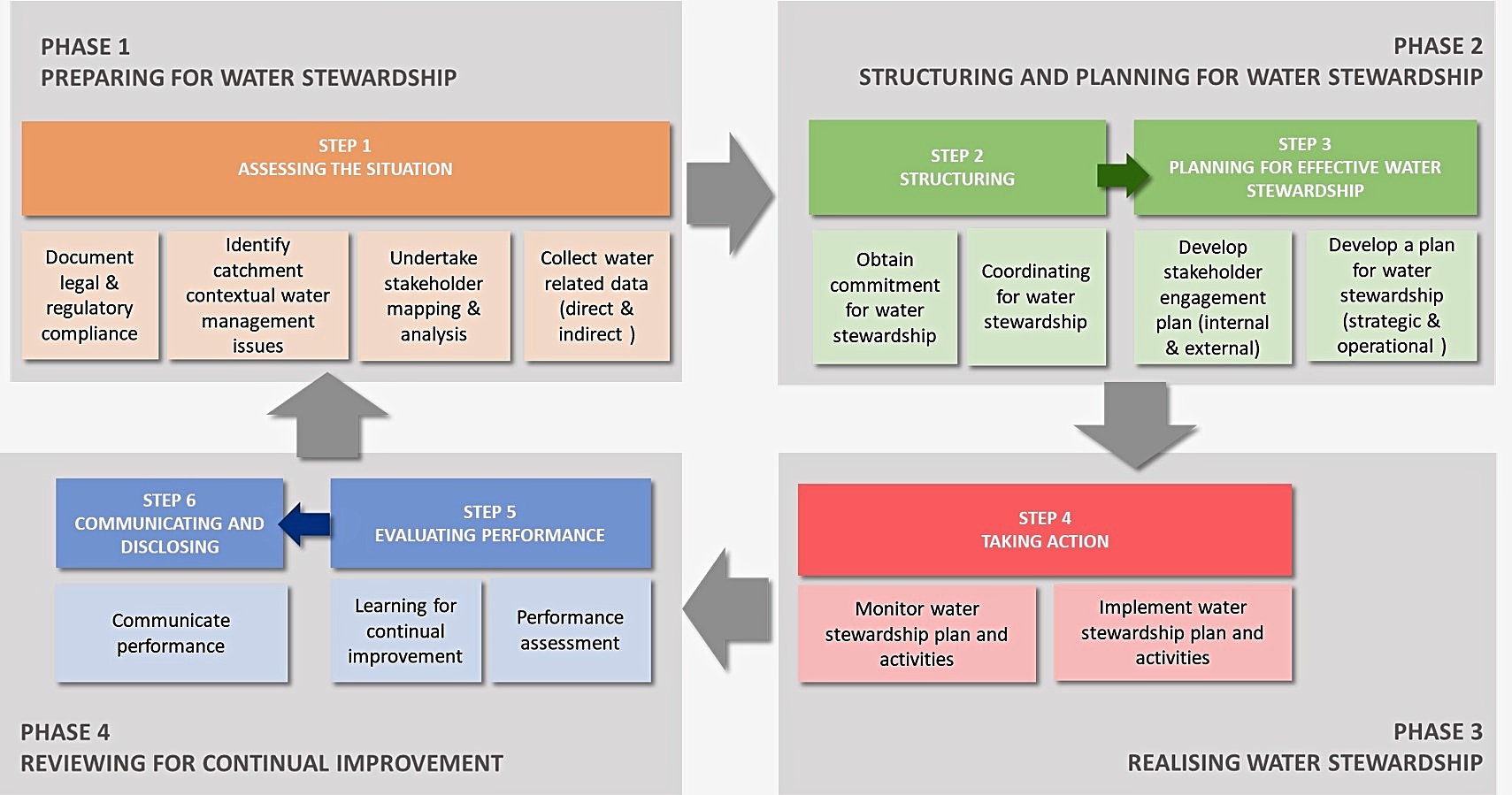This blog is the fourth in a four-part series focused on eco-industrial parks – communities of businesses working together to enhance their combined environmental, economic and social performance. The series offers insights from related GIZ and UNIDO projects that support the uptake of materials efficiency practices to promote cleaner production and climate-resilient business infrastructures.
Through proper water stewardship, an eco-industrial park, its tenant companies and the surrounding community can better assess their water use and take informed decisions to manage water more efficiently.
Eco-industrials parks are important to developing countries like South Africa, not only because they enhance resource and materials efficiencies, including water use, but they also improve the overall environmental, economic and social performance of such business infrastructure for common benefits.
Yet, resistance from different stakeholders to develop an eco-industrial park (EIP) often lies in conflicting needs and perceptions. In terms of water, this focuses on the human right to water, water as a valuable resource for economic activity, and its protection and conservation for future availability. In South Africa, the EIP approach is often weighed against other developmental priorities even though a large portion of the population aspires to have high water-use flush toilets, swimming pools and extensive garden irrigation. “I pay for the water, so I can use it as I want,” they say.
This, however, indicates a certain flaw in understanding in terms of the added value of promoting the holistic EIP approach, which is outlined in the International Framework for Eco-Industrial Parks. Indeed, the EIP approach results in many direct benefits for tenant companies and the surrounding community in terms of increased water efficiency and resulting cost savings, cleaner water and improved living conditions, among others.
Part of South Africa’s approach to promoting EIPs focuses on water management given it is one of the most water-scarce countries in the world, with a projected shortage of 17% in available water supply by 2030 if current practises are not adjusted. After the Day Zero challenge faced by the City of Cape Town in 2018, there is a significantly greater awareness regarding the value of water and its necessity for life. While Cape Town has responded exceedingly well to that challenge, a lot more still needs to be done.
A water stewardship guide for South Africa
As part of South Africa’s commitments to the Paris climate change agreement and the UN Sustainable Development Goals (SDGs), the Department of Trade, Industry and Competition introduced an EIP Programme as part of its Industrial Park Revitalisation Programme. This includes the development of standard operating procedures, which support industrial park management entities in their operations by providing a consistent standard that they can pursue and benchmark against. This is particularly relevant in the transition process from traditional industrial parks to EIPs.
Together with the Deutsche Gesellschaft für Internationale Zusammenarbeit (GIZ) GmbH, a specific water stewardship standard operating procedure was developed between 2019 and 2020. Given that the AWS International Water Stewardship Standard can be difficult for smaller organizations to apply, it was simplified in the form of a water stewardship guide to increase participation in better water management. The guide makes reference to the EIP International Framework and the three core areas of environmental, economic and social performance.
 The guide is based on the concept of stewardship defined by the Alliance for Water Stewardship, namely the use of water that is socially and culturally equitable, environmentally sustainable and economically beneficial, and achieved through a stakeholder-inclusive process that involves site- and catchment-based actions. Water stewardship in a park involves a number of stakeholders (see diagram to the right), with strong emphasis placed on partnerships and collaboration.
The guide is based on the concept of stewardship defined by the Alliance for Water Stewardship, namely the use of water that is socially and culturally equitable, environmentally sustainable and economically beneficial, and achieved through a stakeholder-inclusive process that involves site- and catchment-based actions. Water stewardship in a park involves a number of stakeholders (see diagram to the right), with strong emphasis placed on partnerships and collaboration.
By introducing the concept of water stewardship, a park, its tenant companies and the surrounding community can better assess their water use and take informed decisions to manage water more efficiently. The water stewardship guide offers a tiered approach to water management by integrating the water interests and related risks of a company’s operations, but also looks beyond a single tenant company by considering interactions with other businesses in the park and within the wider catchment area (see diagram below for the core outcomes of the waterstewarship approach).

Specifically, the guide assists users and stakeholders to better understand why water stewardship is required. It offers a means for standardizing and systemizing the adoption of water stewardship in the operations of parks and park tenants, and provides a roadmap and a step-by-step manual for engaging in water stewardship. The guide can be applied to facilitate the deployment of water stewardship actions in industrial sites, which is supported by a number of illustrative tools and templates. These tools are designed for ease of use and accommodate to the different contextual issues and operational nuances of industrial park environments. The guide includes case studies and introduces relevant tools and knowledge products that are available, such as the Alliance for Water Stewardship Standard and a water stewardship brief by WWF.
The water stewardship guide outlines core areas of action in a way that is understandable and which can enable parks and tenants to implement without cumbersome and extensive procedures and processes by providing clearly defined reference points to ensure water stewardship progress and success. These core areas are outlined in the following diagram.

Future water action
The lessons learned from the application of the water stewardship guide will be shared through the GIZ’s NatuReS programme. It is currently being applied in a project in one of the special economic zones in South Africa. There is significant added potential to make the guide available to any organization that wants to be more resource efficient. In fact, the guide was found to be of such value that it was proposed as an important tool to assist municipalities and any organization in its water management, especially water efficiency.
Eco-industrial parks are in many ways a microcosm of a larger city, or a country, or even the planet. In South Africa, they are seen as a catalyst for regional development that is sustainable and addresses poverty, inequality and employment. Water stewardship for EIPs not only will assist traditional industrial parks in their transition towards EIPs, but also support the just transition of the country. It provides a mechanism for continuous engagement with stakeholders and can therefore also serve as a valuable platform in support of other local socio-economic development activities that are at the same time sustainable and protect the environment, biodiversity and the earth’s limited resources.
This blog series has been commissioned by the Deutsche Gesellschaft für Internationale Zusammenarbeit / German Corporation for International Cooperation (GIZ) under the International Climate Initiative (IKI) on behalf of the German Federal Ministry for the Environment, Nature Conservation and Nuclear Safety (BMU).



